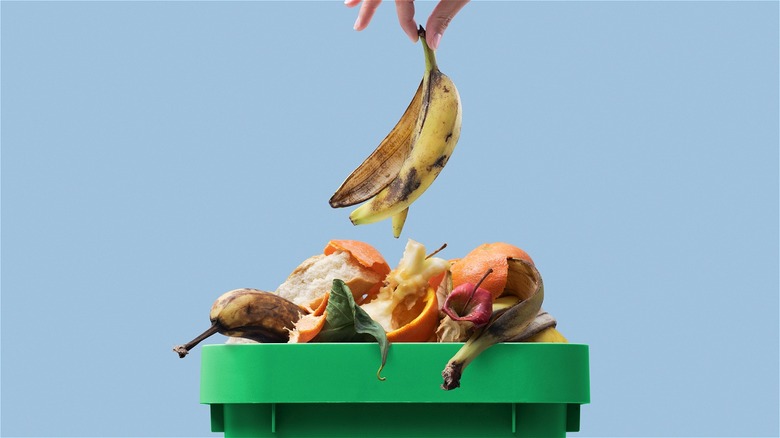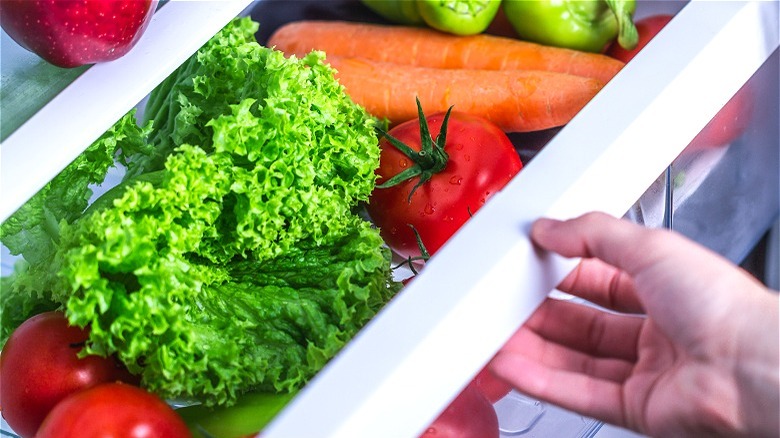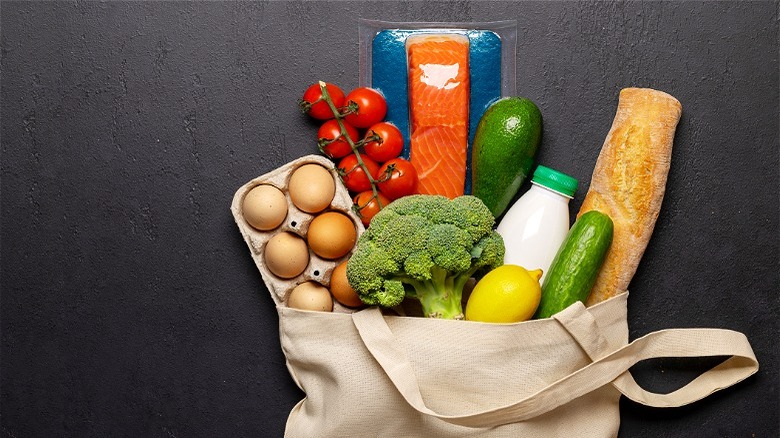The Food That Americans Waste The Most Really Isn't A Shock
Most of us have good intentions when we make our weekly trips to the grocery store. When it comes to eating healthy, a plan of attack often helps make our goals a reality. While some of us may spend time creating a meal plan, others may choose to incorporate some of the healthiest snacks of 2023. Regardless of what your weekly grocery haul looks like, by the time a week or two has passed, there are always some foods that make their way to the wastebasket instead of your stomach.
If you had to guess which foods are most often tossed, you'd likely consider the foods with a shorter shelf life and the ones we all (sometimes) struggle to choke down. The truth is, Americans don't eat nearly enough vegetables. Based on a CDC report from 2019, only 10% of Americans eat the recommended amount of vegetables per day and only 12.3% met the fruit intake suggestion. Knowing this, you probably won't be surprised to discover the food that we waste the most is a vegetable — lettuce. According to a survey conducted by OnePoll and HelloFresh (via SWNS Digital), out of 2,000 participants, 27% admitted lettuce was the hardest food to use up before going bad — the highest of all foods. 35% of those surveyed also admitted to throwing away more food than intended. However, what makes lettuce more suspectable to becoming food waste than all other perishable food items?
Lettuce doesn't have the longest shelf life
If you purchased a few pre-cut bags of lettuce to make Caesar salad for a quick weeknight dinner and then forgot, chances are, by the end of the week all of those prepared greens have already wilted and become slimy. Lettuce is not only a great base for salads, but it's also a handy accompaniment for sandwiches and snack plates alike, but unfortunately, these delicate leafy greens don't last very long in the fridge.
While there are various ways to ensure you're storing your lettuce for maximum freshness, if you're partial to buying varieties that are pre-cut, you only have about seven days to enjoy before the contents take a turn for the worse. Unfortunately, lettuce waste doesn't start at the retail level, either. Most supermarkets require a duration of around 11 days before the marked sell-buy date in order to stock it on their shelves. Farms and distribution centers across America have been forced to throw away perfectly fresh lettuce due to time restrictions surrounding expiration dates.
If you wish your lettuce lasted longer than one week, simply buy whole heads and take extra steps to keep them fresh. Whole heads of lettuce may last up to three weeks when properly stored in your refrigerator. Now that you know Americans are guilty of throwing away more lettuce than anything else, what are some other food items we tend to toss?
Americans often waste highly perishable food items
While throwing away lettuce may not seem very shocking given the fact that leafy greens spoil with time, many of the other food items we throw away also happen to be fresh produce. Based on the same survey conducted by OnePoll and HelloFresh mentioned above, even though lettuce happens to be the most wasted food item, half of the top 10 foods we throw away are fresh fruits and vegetables. Even though there are many delicious things you can make with bananas, many foodies prefer to eat their bananas before they start to ripen and become spotty. While bananas claim the number two spot for the most wasted food, apples, avocado, and carrots also rank high on the list.
Additional foods that made the most wasted list are milk, bread, meat, and eggs. Even though these items have a smaller shelf life than pantry-stable foods, most surveyed participants blame their own forgetfulness and placing these perishable foods out of sight. This is usually why these foods are not consumed more readily. Most participants also claim to have good intentions about eating leftovers, when in reality, many of us forget about leftover food or don't feel like eating it when the time comes. We should all strive to be more realistic about our food consumption and put more perishable items front and center: doing so will help us all cut down on future food waste.


